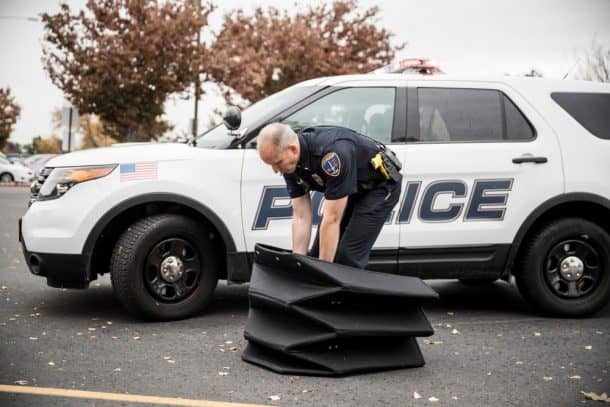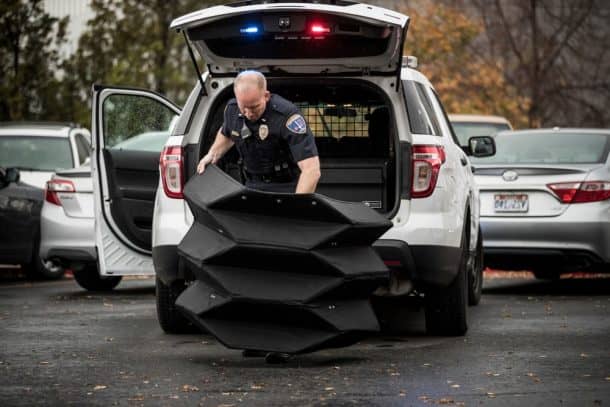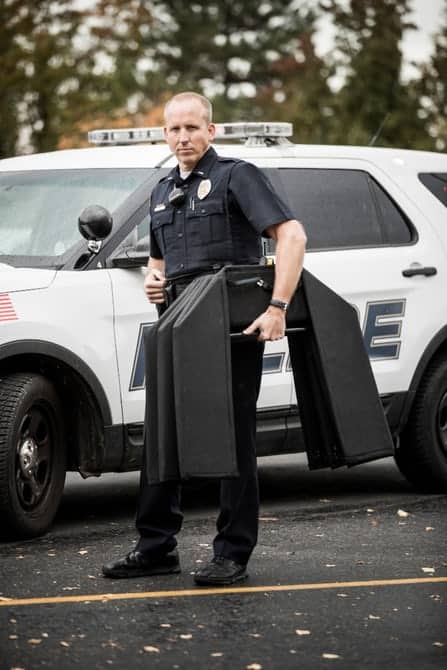The ancient art of origami has proved itself to be a lot more useful than just making paper handworks. From solar array for space implementation to medical engineers working on ingestible robots; the skill is worth its weight in gold. A team from Brigham Young University (BYU) have also taken inspiration from a Yoshimura origami crease pattern as they have created a revolutionary lightweight bulletproof shield.
The professor of mechanical engineering Larry Howell and his team at BYU wanted to do away with the heavy and cumbersome bulletproof shields and barriers. After rigorous data collection from the law enforcement and several federal departments, the team came up with a design that is both lightweight as well as safe enough to fend off speeding bullets!

The lighter portable shield is made of 12 layers of bulletproof Kevlar that takes less than fives seconds to deploy. The contraption weighs only 55 lb (25 kg), which is close to just half of current steel-based shields and can cover two to three people at once.
“It goes from a very compact state that you can carry around in the trunk of a car to something you can take with you, open up and take cover behind to be safe from bullets,” says Terri Bateman, BYU adjunct professor of engineering. “Then you can easily fold it up and move it if you need to advance your position.”

The tests portrayed the shield to be even more successful than what their calculations had suggested; with the cover being able to stop incoming bullets from 9mm, .357 Magnum, and .44 Magnum handguns.
“Those are significant handguns with power,” says Howell. “We suspected that something as large as a .44 Magnum would actually tip it over, but that didn’t happen.”
The origami bulletproof shield is still in prototype form, but the product has impressed both the commoners and the law enforcement agencies alike. The product can also be used for broader applications, such as securing schools or protecting the wounded in a shooting incident.

Watch the team explain and test the design in the video below.
We would like to know your thoughts on this incredible product. Comment below!


